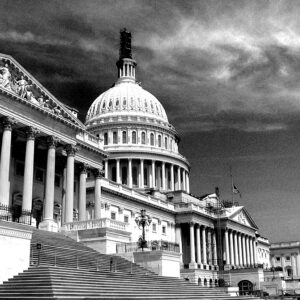In “The Sun Also Rises,” Ernest Hemingway wrote: “How did you go bankrupt?”
“Two ways. Gradually, then suddenly.”
The late MIT economist Rudi Dornbusch said something similar about economic crises. He wrote that a financial crisis takes a much longer time coming than you think, and then it happens much faster than you would have thought.
This was certainly true of the September 2008 Lehman Brothers crisis that led to the 2008-2009 Great Economic Recession. Unfortunately, there are all too many indications that next year we may get a repeat of this pattern and experience a full-blown economic and financial crisis before the November elections.
The Lehman Brothers crisis was preceded by many years of an unsustainable housing boom fueled by reckless lending and by a Federal Reserve fast asleep at the wheel. It took until March 2008 for the first signs of a gathering financial storm to emerge when Bear Stearns had to be taken over by JP Morgan and when strains in the subprime mortgage market surfaced. Only in September 2008 did the situation unravel at lightning speed when the Lehman bankruptcy occurred.
Fast-forward to today, and we have too many disturbing parallels to the run-up to the 2008 Lehman crisis. Among these were two years of extraordinarily easy Fed monetary policy in response to the COVID-19 pandemic. This is underlined by an unprecedented 40 percent explosion in the broad money supply between the beginning of 2020 and the end of 2021.
That explosion helped fuel a so-called “everything bubble” in equity, housing and credit market prices. It also contributed to a surge in inflation to a 40-year high.
If in March 2008 we had the Bear Stearns collapse, this March we had the second- and third-largest U.S. bank failures in history at Silicon Valley Bank and First Republic Bank. Those failures were precipitated by the Fed having had to slam on the monetary policy brakes by raising interest rates at the fastest pace in four decades. That sent Treasury bond yields soaring and bond prices plunging. It also caused a big hole in those banks’ balance sheets, precipitating a bank run.
Anyone who thinks regional banks are out of the woods has not been paying attention to a recent National Bureau of Research Study showing that the mark-to-market losses on the banking system’s bond portfolios amount to a staggering $2.2 trillion. They have also not been paying attention to the impending wave of defaults in the real commercial property space.
It is estimated that over the next few years, $500 billion in commercial property loans will need to be rolled over at substantially higher interest rates than those at which they were initially contracted. According to Morgan Stanley, this — together with high vacancies — will lead to a wave of defaults and to a fall in commercial property prices in six major cities by around 40 percent. That could be highly problematic for the regional banks with close to 20 percent of their balance sheet exposed to such lending.
Compounding the banking system’s problems with falling Treasury bond prices and troubled commercial property loans is that the sharp increase in interest rates is already causing the usual credit cycle loan impairments. Credit card and auto loans have hit a 10-year high while defaults on highly leveraged loans are soaring.
All of this trouble in plain sight in the financial system is not deterring the Fed from hewing to its aggressive monetary policy to defeat inflation at all costs. Indeed, the Fed largely ignores the long lags with which monetary policy operates and the abrupt tightening of credit market conditions now underway. By so doing, it heightens the chances of a painful economic recession next year.

